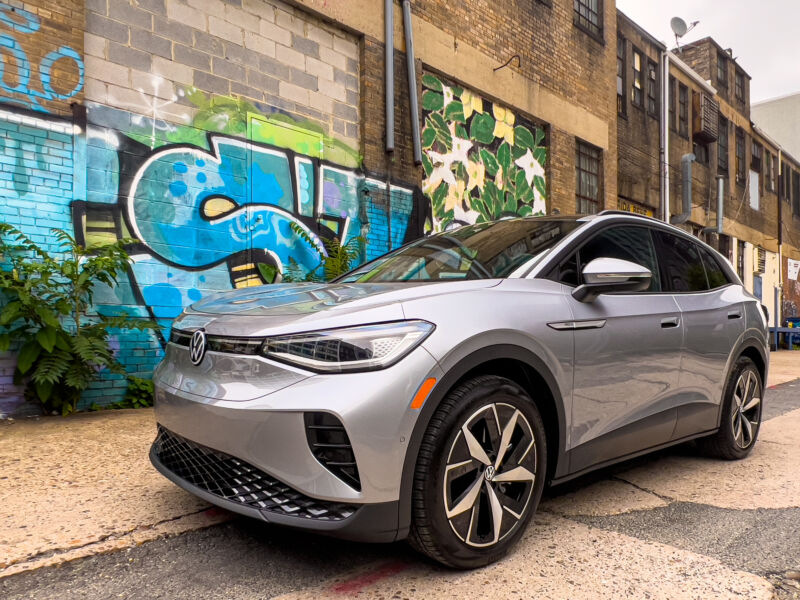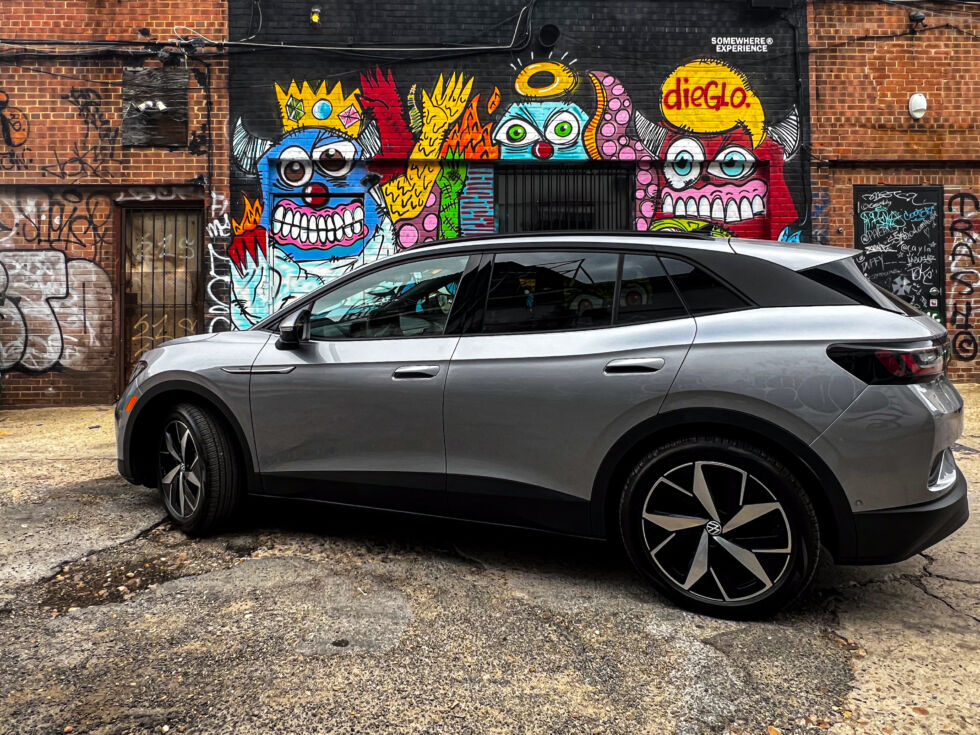not selling well though —
40 percent more power, 30 percent more torque, and a range boost to boot.

Enlarge / The VW ID.4 has a new drive motor and infotainment system for model-year 2024. It’s not the sportiest EV you can buy, but it remains one of our favorites to drive.
Jonathan Gitlin
Volkswagen didn’t wait the traditional four model years before giving its ID.4 electric crossover something of a spiff-up. The tweaks to the model-year 2024 ID.4 are mostly under the skin or inside the cabin—like the recent refresh of the Polestar 2, this update was more about making the ID.4 an easier EV to live with, with more range and more power.
Volkswagen was one of the first automakers to react to Tesla finally making the electric vehicle viable. After the company-wide bet on diesel went up in a cloud of nitrogen oxides and black smoke, VW threw itself headlong into electrification as a way to meet ever-stricter carbon emissions regulations. Already an industry pioneer for the use of highly flexible vehicle architectures that let it build vehicles in a wide range of sizes and shapes with a common set of components and tools, it applied that approach to a line of electric vehicles, all branded under the Intelligent Design, or ID, name.
VW is a global automaker, but automobile tastes are often not global. For Europe, VW designed the ID.3, an electric hatchback that Americans who want forbidden fruit keep asking for, but which generated less than enthusiastic reviews from the people who actually got to buy them. Other models are optimized for China. But for America, with its adoration of the SUV and crossover, VW designed the ID.4.

Enlarge / The ID.4 was designed with America’s love of crossovers in mind.
Jonathan Gitlin
Unveiled in the depths of the pandemic, we got our first (if short) drive in a prototype ID.4 in October 2020. Four months later, it was time to try the production version, an EV we proclaimed “a solid effort.” A few months later, we tried out the all-wheel drive ID.4 and checked out VW’s factory in Chattanooga, Tennessee, which has been churning out locally made ID.4s since mid-2022.
What’s new?
For model-year 2024, the $44,875 ID.4 Pro keeps its 82 kWh battery pack, but its EPA range jumps to 291 miles (468 km), up from 275 miles (443 km). The reason will probably seem counterintuitive if all you’re used to is gasoline cars—a new, more powerful drive unit that generates 282 hp (210 kW) and 402 lb-ft (545 Nm). That’s a 40 percent increase in power and a 30 percent increase in torque compared to the rear-wheel drive ID.4 Pro we tested in the past.
With internal-combustion engine vehicles, turning up the wick on the power and torque usually means your range plummets. Not so with an EV. The new motor has an improved stator and a new water- and oil-cooling system, both of which mean it can cope better with higher thermal loads—VW says this is “an elementary contributing factor” to the improved efficiency. The one-speed transmission has had its components optimized to reduce friction, and there’s a new inverter with all-new software.
-
A very tight turning circle means this is a great EV for American cities.
Jonathan Gitlin
-
There’s plenty of room here for your kids’ sports equipment, the monthly Costco run, or a vacation’s worth of luggage.
Jonathan Gitlin
The battery can also accept a higher rate of power during charging and regenerative braking, now 175 kW, up from 125 kW. That means a 10–80 percent fast charge should take 30 min. While we weren’t able to deplete the battery quite enough to test that, a charge from 35–80 percent state of charge took just 22 minutes at a peak of 155 kW, and just under 31 minutes was sufficient to reach a 92 percent SoC from that starting point.
On the road, and despite its mainstream design, the ID.4 remains a pretty good EV to drive. It has a very tight turning circle (31.5 feet/9/6 m), which is helpful in the city, and on a winding back road it is far better-mannered than a family crossover should be. A shared vehicle dynamics control system with the latest Golf GTI no doubt helps here.
I prefer Comfort mode over Sport; the latter makes the steering heavier but with no more feedback and makes the lift-off regen braking more aggressive. Power delivery is very smooth despite the bump in output.
In any of the three modes (which includes Eco as well as Comfort and Sport) the ride is a little bouncy—US market ID.4s do without adaptive dampers, so it doesn’t change when you switch. And there was a fair bit of road noise from the tires at highway speeds.
I was surprised that, in relatively mild weather, I was able to achieve an average of 4.1 miles/kWh (15.2 kWh/100 km). As the weather got hot and AC was a necessity, this dropped to 3.5 miles/kWh (17.8 kWh/100 km), which is still an improvement on the First Edition we tested in 2022.